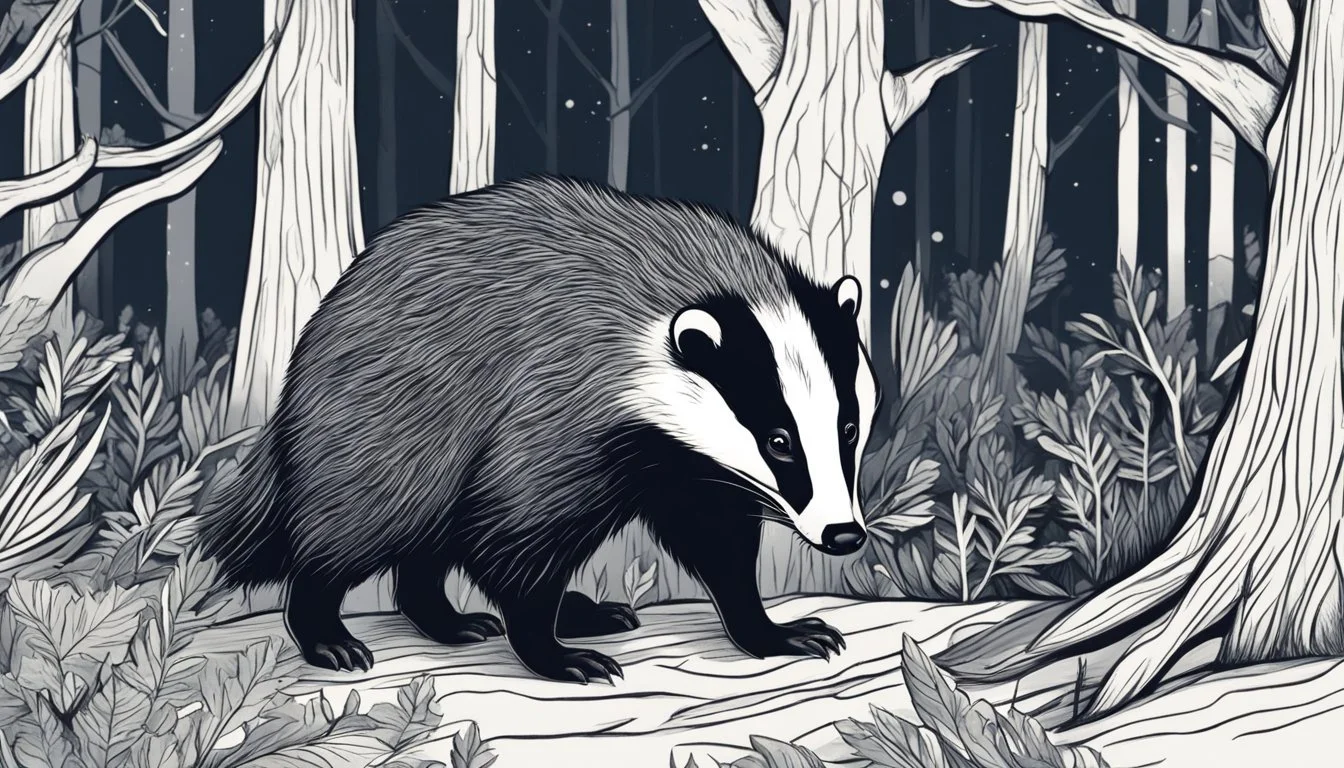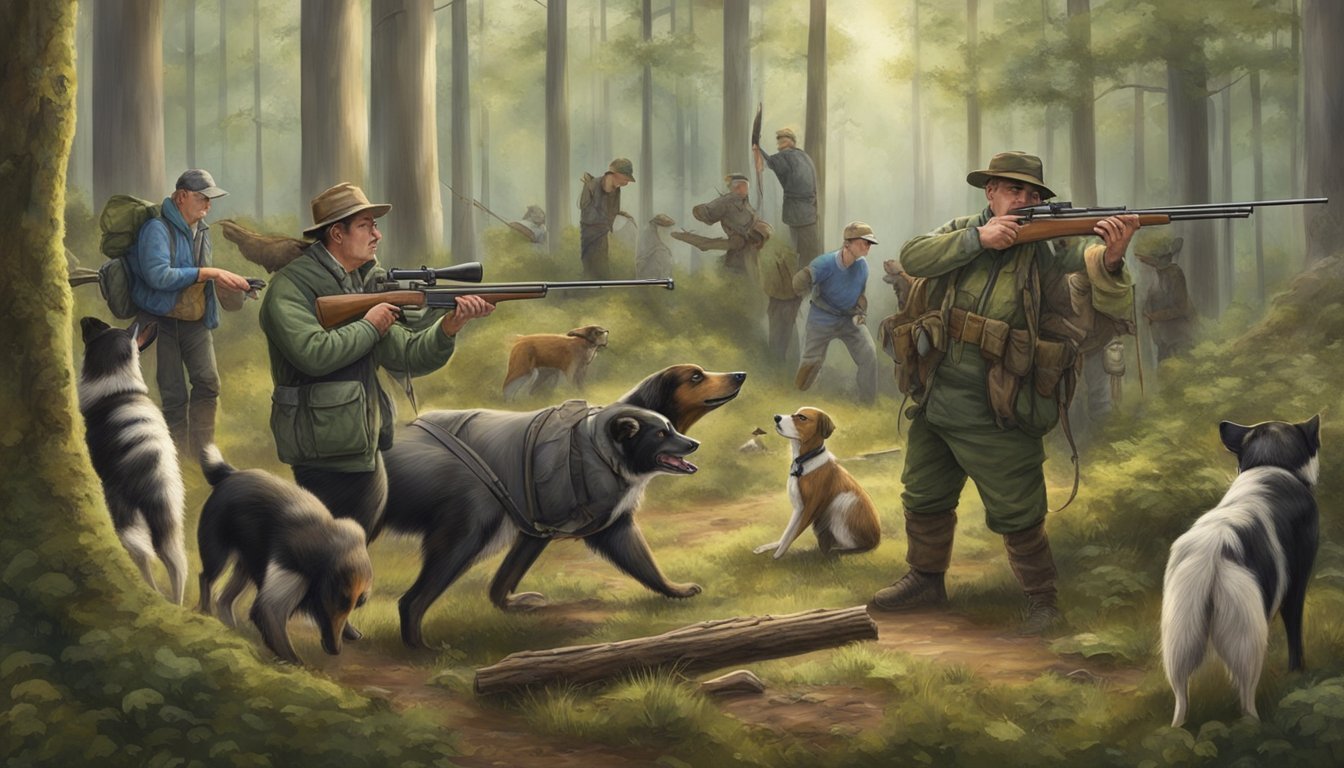Badger Hunting for Beginners
Essential Tips for Starting Out
Badger hunting can be a challenging yet rewarding outdoor activity for those new to the pursuit. This pastime requires a unique set of skills and knowledge, particularly in wildlife habits, tracking, and the safe handling of hunting equipment. For beginners, it is vital to accumulate experience through study and practice while adhering strictly to local regulations that govern the hunting of these resilient creatures. Proper preparation involves learning about badger behaviors, the environments where they thrive, and the techniques that are most effective for a successful hunt.
To embark on this journey, the novice hunter must select appropriate gear, which includes understanding the use of firearms or archery, depending on their hunting preference. Safety measures are paramount, not only for the hunter but for the sustainability of the wildlife populations. Engaging with experienced hunters or guides can accelerate the learning curve and provide practical insights that are not easily gleaned from books or online resources.
Hunting badgers also implicates a responsibility to comprehend and respect the ecological impact and the ethical considerations of wildlife management. It is recommended that anyone new to hunting become familiar with conservation practices to ensure that their hunting activities contribute positively to the natural balance and the preservation of badger species. With the right foundation of knowledge and a respectful approach, badger hunting can be an intricate sport that enhances one's appreciation for nature and wildlife.
Understanding Badger Behavior
Before venturing into badger hunting, one must familiarize themselves with badger behavior, which directly influences their hunting tactics.
Habitat and Territory
Badgers are burrowing mammals known for their preference for open grasslands, farmlands, and the edges of woods where the soil is suitable for digging. They establish extensive networks of tunnels and chambers called setts, which they use for sleeping, rearing young, and escaping predators. Badgers are territorial and the size of their territory can vary depending on the abundance of food sources.
Feeding Patterns
With a diet that consists mainly of earthworms, insects, and small mammals like rabbits and rodents, badgers exhibit opportunistic feeding behavior. They are proficient diggers, using their powerful forelimbs to unearth their prey. Badger feeding habits change throughout the year depending on food availability. For instance, earthworms make up a significant part of their diet during wet conditions when these prey are more accessible.
Nocturnal Activities
Badgers are primarily nocturnal; they are most active at night, which is when they do the majority of their foraging. During daylight hours, they tend to stay inside their setts. Nighttime behaviors include marking their territory, foraging for food, and, in the case of mating pairs, social interactions. Understanding the nocturnal patterns of badgers is essential for hunters, as it informs the optimal times for hunting or trapping.
Legal Considerations
When embarking on badger hunting, it's crucial for beginners to understand and comply with local hunting laws and regulations. Procuring the appropriate hunting license is a foundational step.
Hunting Laws and Regulations
Laws governing hunting ensure wildlife conservation and promote safety. They typically cover:
Seasons and Bag Limits: Determining when hunters may hunt and how many badgers can be legally taken.
Hunting Zones: Designated areas where hunting badgers is permitted.
Legal Hunting Hours: The timeframe during which hunting is allowed.
Hunter Education: Required courses that provide knowledge on safe hunting practices.
Equipment Regulations: Restrictions on firearms and other gear used for hunting.
Ethical Hunting Practices: Encouraging hunters to take an ethical shot that ensures a swift and humane harvest.
Compliance with these regulations is enforced by wildlife officers.
Obtaining a Hunting License
One must obtain a hunting license before hunting badgers. The process typically involves:
Eligibility: Meeting age, residency, and hunter education requirements.
Application: Completing an application through state wildlife agencies or authorized vendors.
Fees: Payment of applicable fees, which vary by state and residency status.
It is advised to check details with local authorities since regulations can differ across states and regions.
Preparation and Gear
Success in badger hunting hinges on the right preparation and selecting the appropriate gear to match the challenges of the hunt. Seasoned hunters equip themselves with tools and attire that ensure stealth, safety, and efficiency in the field.
Choosing the Right Equipment
Firearms and Bows: A reliable rifle, such as a scoped .22 rimfire, offers precision for hunting badgers. For those preferring bows, seeking out quiet and efficient models optimizes their hunting performance while maintaining the element of surprise.
Rifle: Scoped .22 rimfire – ideal for smaller game like badgers.
Bow: Quiet and efficient – preferred for stealthy approaches.
Essential Gear Insights
Essential Gear: Beyond the choice of weapon, hunters must carry additional essential gear. A good quality knife is indispensable for dressing the game post-hunt, while binoculars play a critical role in spotting badgers from a distance without startling them.
Knife: Sharp and durable for game dressing.
Binoculars: Clear optics for distant spotting.
Clothing and Camouflage
Appropriate Attire: Wearing the right clothing enhances a hunter's ability to blend with the environment. Hunters often choose camo patterns appropriate to the terrain. Durable and weather-appropriate attire is as essential as the hunting gear itself.
Camo: Terrain-specific patterns for optimal concealment.
Clothing: Durable, suitable for weather and region.
Selecting quality gear suited to badger hunting's unique demands significantly increases the chances of a successful and rewarding hunt. With each item serving a specific purpose, hunters become well-prepared to step into the wild.
Hunting Skills Development
Developing hunting skills is crucial for beginners, as it ensures both safety during the hunt and success in the field. Mastery requires comprehensive education, consistent shooting practice, and the application of effective scouting and tracking techniques.
Safety and Hunter Education
Before stepping into the wilderness, beginners must prioritize safety by completing a hunter safety course. This certification process teaches prospective hunters the essentials of safe weapon handling, ethical hunting practices, and local regulations. Courses often cover:
Firearm Safety: Proper use, storage, and transportation.
Hunting Laws: Understanding the legal framework governing hunting.
Shooting Practice
Shooting practice is fundamental to becoming a proficient hunter. It develops not only the marksmanship but also the muscle memory and the confidence required for making accurate shots under various conditions. Beginners should:
Practice Regularly: Create a consistent schedule to hone shooting skills.
Start at a Range: Gain experience with targets before attempting to hunt.
Scouting and Tracking
Scouting and tracking are key skills that enable hunters to locate and follow game. They involve observing signs of wildlife activity and understanding animal behavior. For effective scouting and tracking, one must:
Study Animal Habits: Learn patterns of movement and feeding.
Interpret Signs: Identify tracks, trails, and markings specific to badgers.
By committing to these skill areas, beginners lay a solid foundation for successful and responsible hunting.
Hunting Techniques
When preparing for badger hunting, different approaches can significantly affect success rates. Focusing on calls, stalking techniques, and the post-hunt process can enhance the hunting experience while maintaining ethical standards.
Using Calls and Decoys
Calling is an art in badger hunting. The right calls imitate the sounds of a badger's prey, which can lure them into the open. Use a combination of electronic and mouth calls to mimic these sounds accurately, and consider the season when selecting your call types. During rifle seasons, calls can be used in conjunction with decoys to create a more convincing scene.
Stalking and Spotting
Stalking requires patience and alertness. Move slowly and stealthily, using natural coverage to approach areas where badgers are known to frequent. Spotting involves identifying badger signs and habitats; look for tracks, digging marks, and dens. Hunters commonly employ both bow hunting and rifles, with bow hunting offering a quieter approach that may benefit the stealth required for effective stalking.
Field Dressing and Skinning
After a successful hunt, field dressing is the immediate step to preserve the meat. It involves removing the internal organs to prevent spoilage. Skinning follows, which requires a sharp knife and an understanding of the badger's anatomy to avoid damaging the fur. Proper technique is not only about efficiency but also respecting the animal by minimizing waste.
Field Dressing Steps:
Lay the badger on its back.
Make a careful incision from the sternum to the pelvis.
Remove the entrails, ensuring not to puncture them.
Skinning Basics:
Use a sharp, dedicated skinning knife.
Start at the hind legs, cutting around the leg and peeling the skin back.
Proceed along the body, keeping the knife blade upward to prevent fur damage.
Where to Hunt
When embarking on badger hunting, a beginner must understand the distinction between public and private lands, as each offers unique opportunities and challenges.
Public Land Opportunities
Public hunting lands provide ample terrain for badger hunting. Hunters should look for areas with thick cover, as badgers are known to inhabit spaces where they can easily create dens and forage for food. Most states have public land hunting areas designated for wildlife management and recreational hunting. Interested hunters can visit their state's wildlife agency website for a map of available public hunting lands. Here, the terrain can vary from forests to grasslands, so hunters should be well-prepared to adapt to different environments.
Checklist for Public Land Badger Hunting:
Research available public hunting lands through state resources.
Understand the terrain on the specific public land to prepare suitable gear.
Familiarize oneself with state regulations on hunting badgers.
Private Land Access
For hunting badgers on private land, explicit permission from landowners is mandatory. Hunters can seek access through direct contact or through networks like hunting outfitters, which may come with guides and potentially some cost. Some private lands are managed for hunting and might offer a better chance of encountering badgers due to controlled environments and lesser competition.
Steps to Gain Private Land Access:
Contact local landowners or use services that connect hunters with landowners.
Inquire about the terrain and if the land has thick cover areas ideal for badgers.
Discuss and agree on any terms for access or fees if applicable.
After the Hunt
Once the hunt is over, the focus shifts to the responsible handling of the catch and considering the impact on the ecosystem. Responsible practices ensure that the pursuit of hunting is sustainable and ethical.
Processing and Preparation
Processing: Upon a successful badger hunt, hunters must swiftly and efficiently process the animal to preserve the quality of the meat. They should:
Field dress the badger, removing internal organs to prevent bacteria growth.
Skin and cool down the carcass as soon as possible to maintain the integrity of the wild game meat.
Preparation:
The meat should be properly butchered into manageable sections.
Hunters can then decide if they wish to age the meat, which can enhance flavor and tenderness.
Badger meat, being a type of wild game, benefits from marinating or brining before cooking to ensure it remains moist and flavorful.
Conservation and Ethics
Conservation: Hunters play a crucial role in conservation by adhering to wildlife management practices that include:
Respecting hunting quotas and seasons set by authorities to prevent overhunting.
Participating in habitat restoration efforts, if applicable, to ensure long-term sustainability of wildlife populations.
Ethical Hunting: Ethical considerations are paramount. Hunters should:
Ensure that they have the correct permits and licenses for badger hunting.
Utilize all parts of the animal to honor the life taken, striving for zero waste.
Share knowledge with fellow hunters on best practices for hunting and processing to promote a culture of respect and responsibility.
Engaging with the Hunting Community
Beginners in badger hunting can rapidly enhance their skills and knowledge base by connecting with experienced hunters and utilizing online resources. Mentorship provides practical insights, while digital platforms offer a wealth of information at one's fingertips.
Mentorship and Groups
New hunters should seek out mentors within the hunting community to gain hands-on experience. Mentors can offer invaluable advice on techniques, safety, and local regulations. Many states have hunting mentor programs run by organizations like the National Deer Association, which pair new hunters with seasoned veterans.
Hunting Clubs: For example, the Badger Hunting Club in Wisconsin provides a space for hunters to unite and share knowledge, emphasizing a collaborative hunting experience.
Social Networks: They can also attend local events and fairs that often feature clubs and groups which focus on hunting education and responsible practices.
It is important for beginners to find a mentor they are comfortable with and who practices safe and ethical hunting.
Online Resources and Applications
The digital age has made it easier for hunters to find information and tools that can aid in their expeditions. Online resources are plentiful, and applications like OnX Hunt offer detailed mapping tools that help hunters explore terrain, mark waypoints, and track wildlife patterns.
Educational Content: Websites and forums are filled with articles, PDF guides, and videos that cover various aspects of badger hunting.
Hunting Gear: Companies like Sitka and Kuiu provide not just gear but also educational content that can help one understand how to effectively use their equipment.
Podcasts: Elk Talk is an example of a podcast that discusses broader hunting strategies that can be adapted to badger hunting.
Leveraging these online tools can help beginners become proficient and responsible hunters by staying informed about the latest techniques and best practices within the hunting community.





